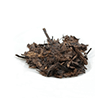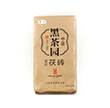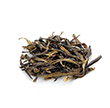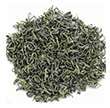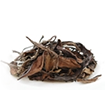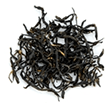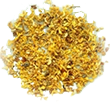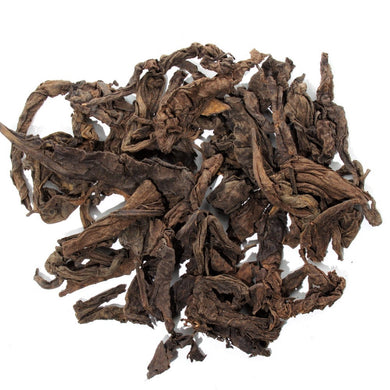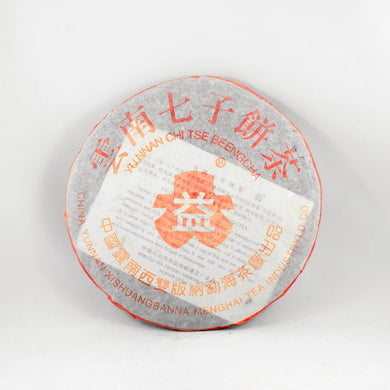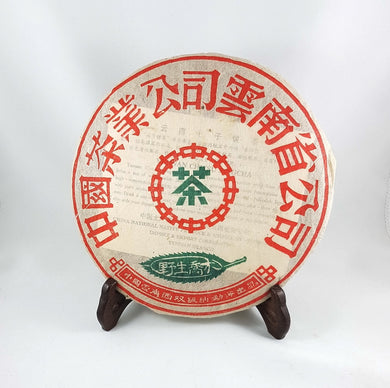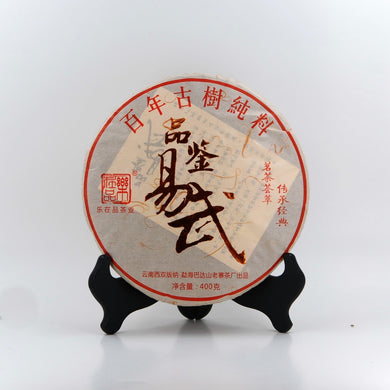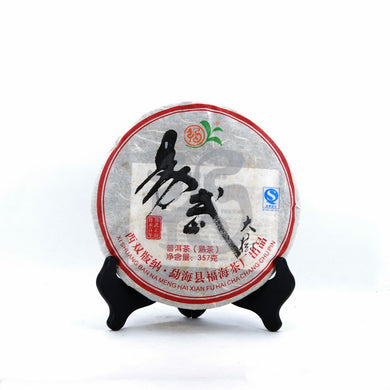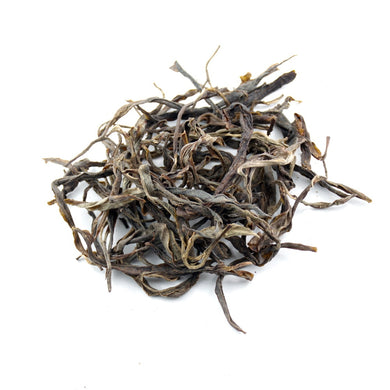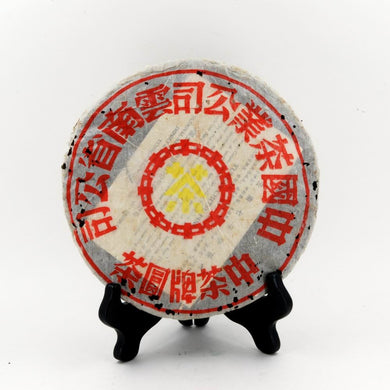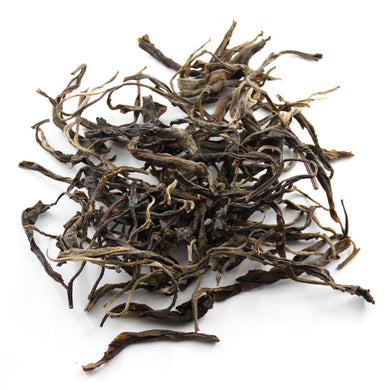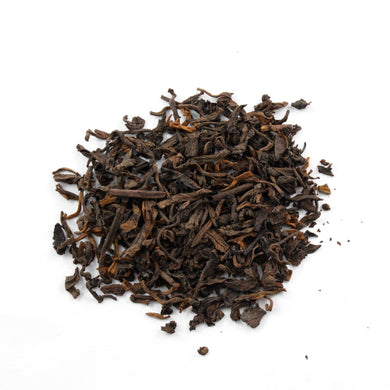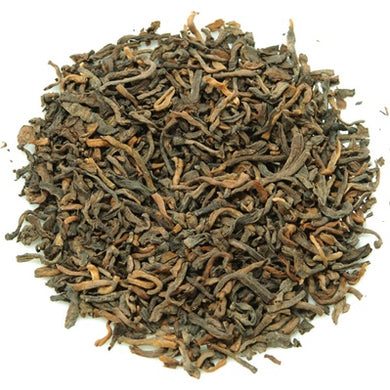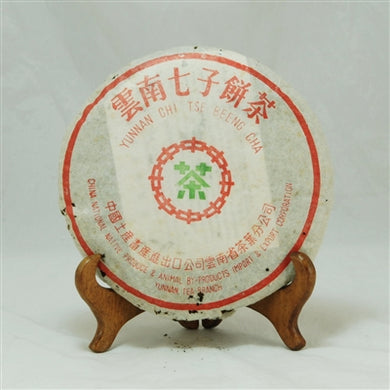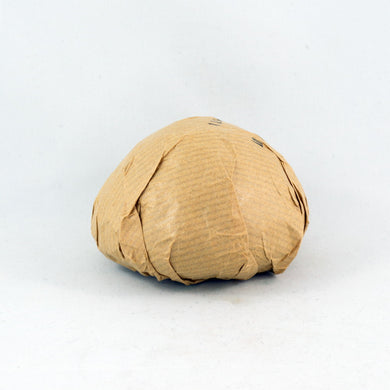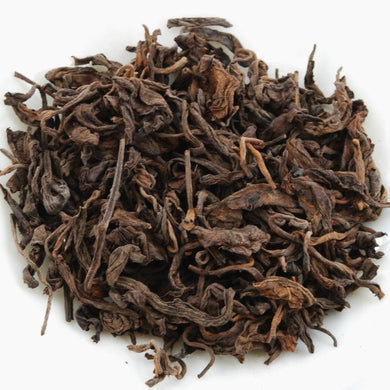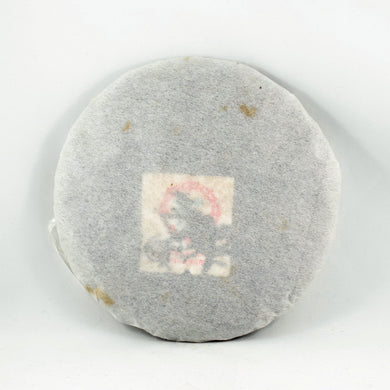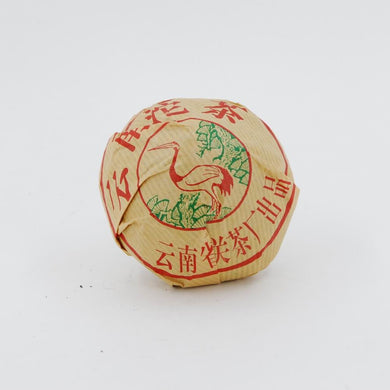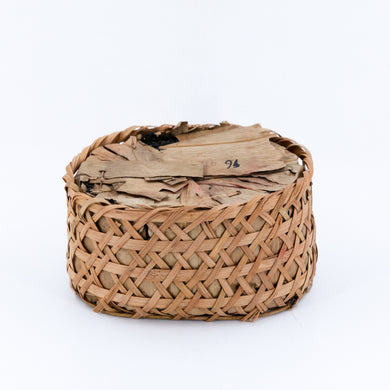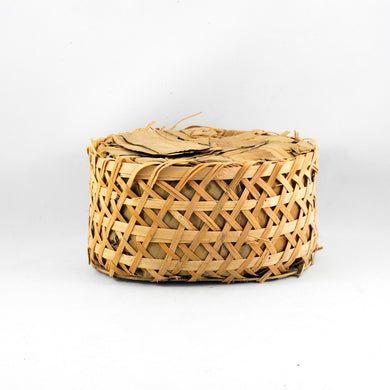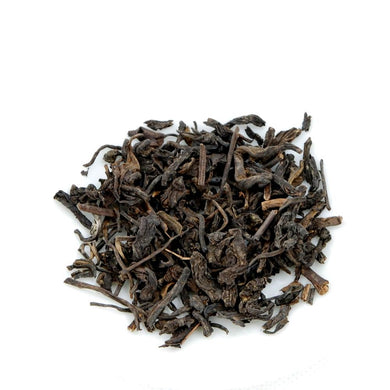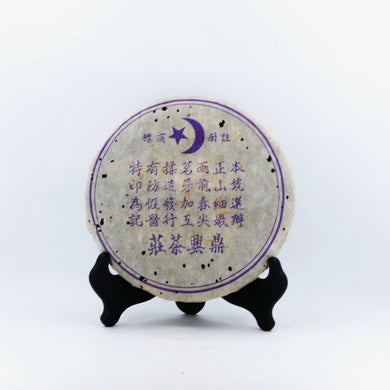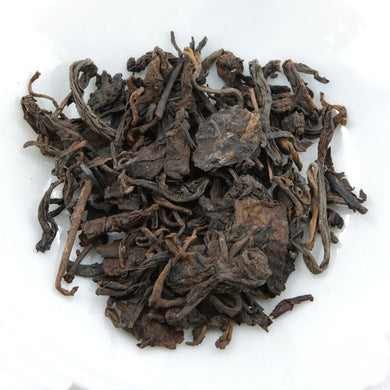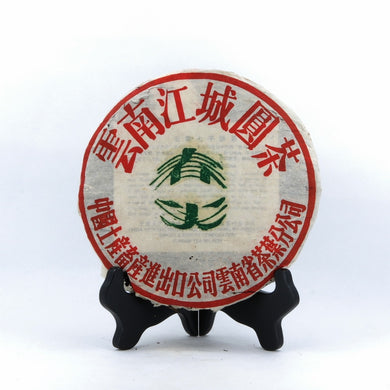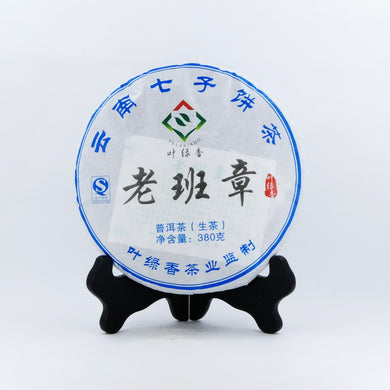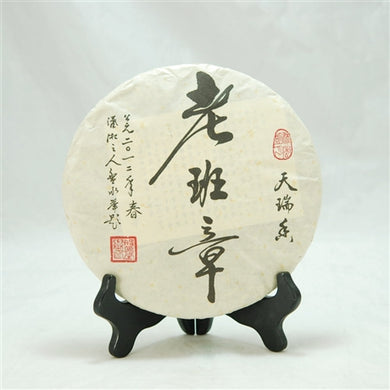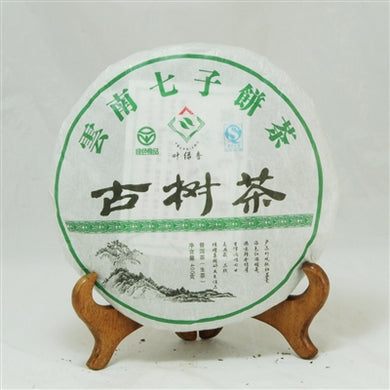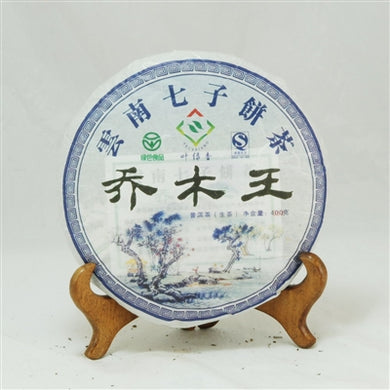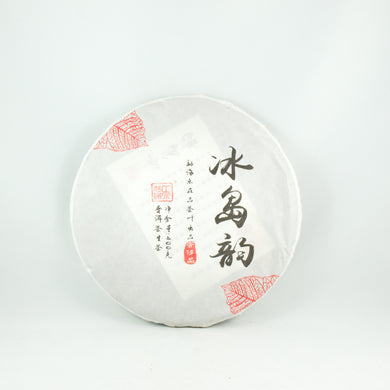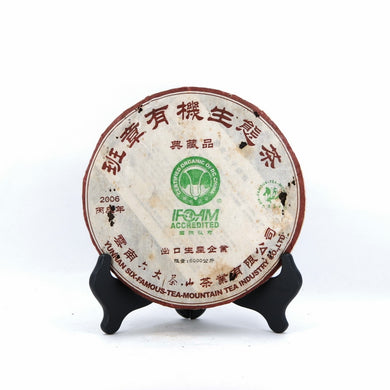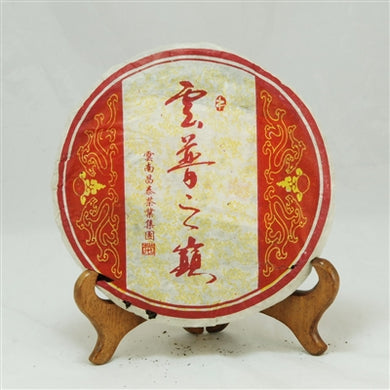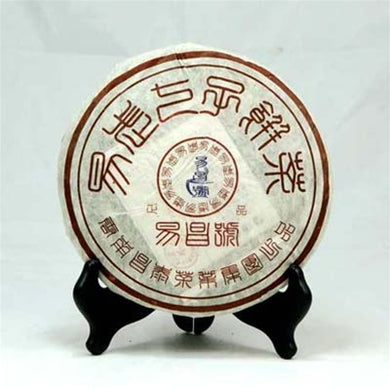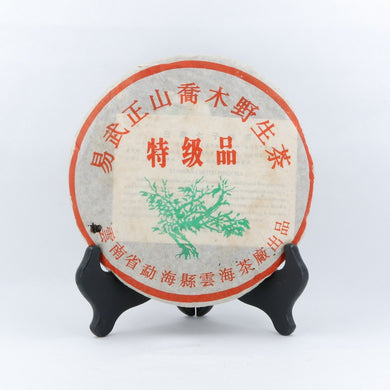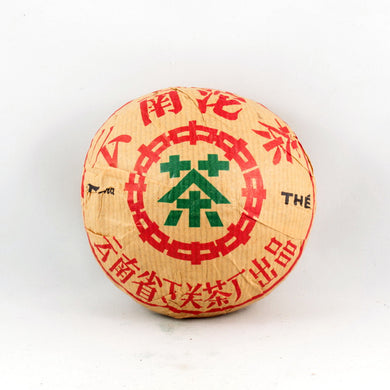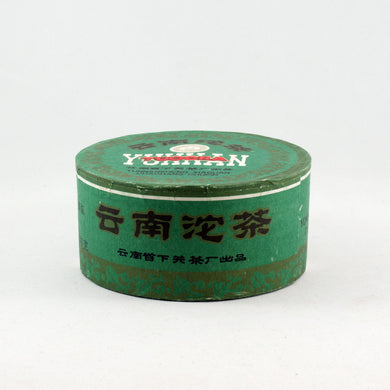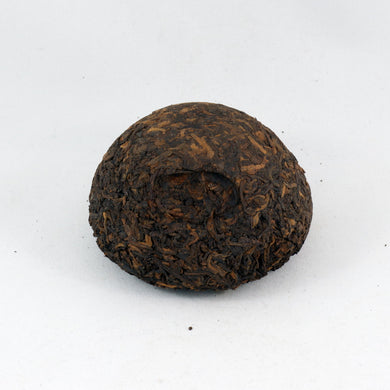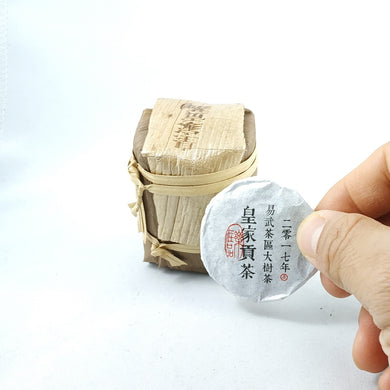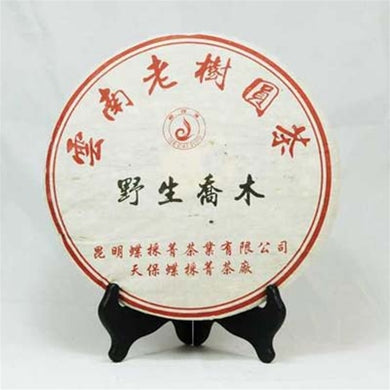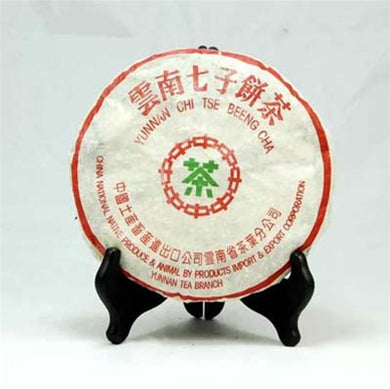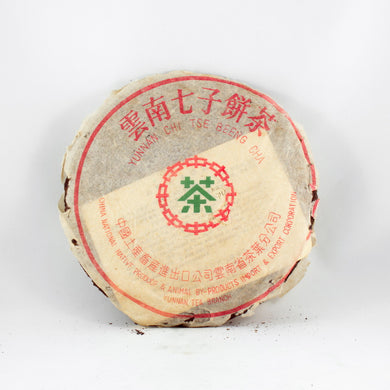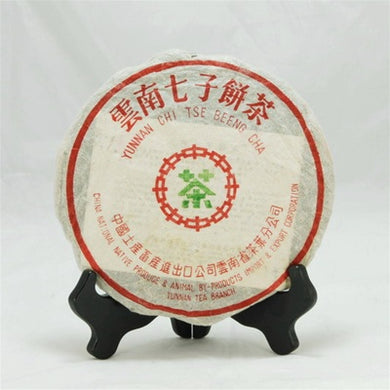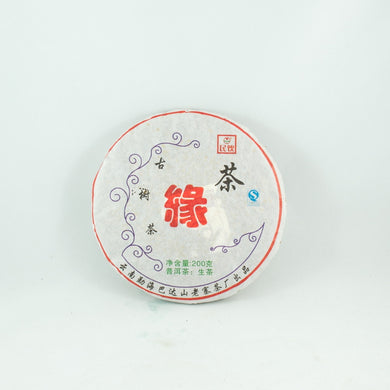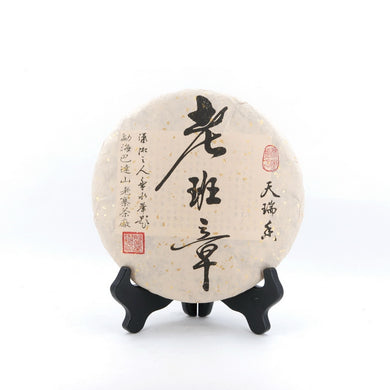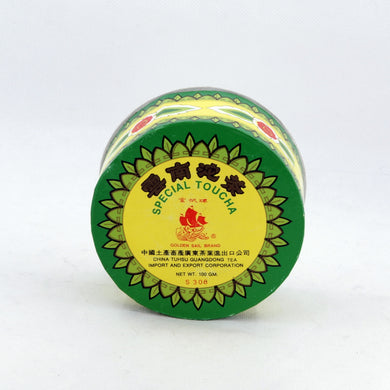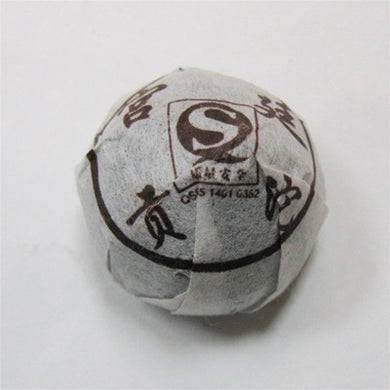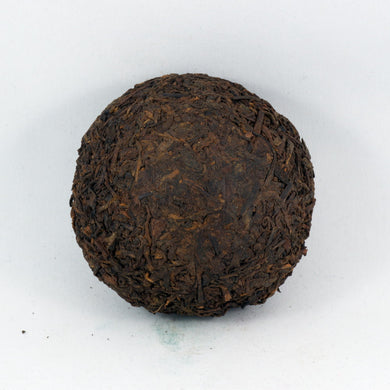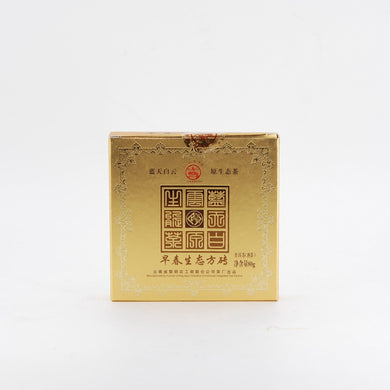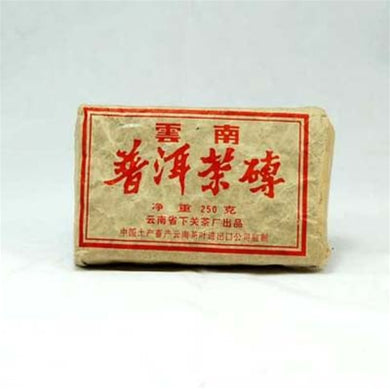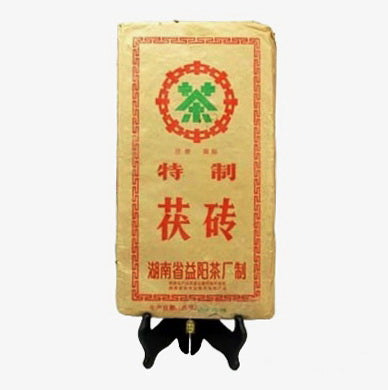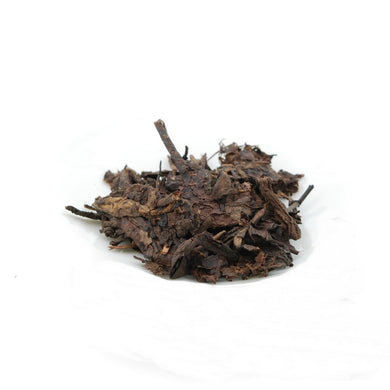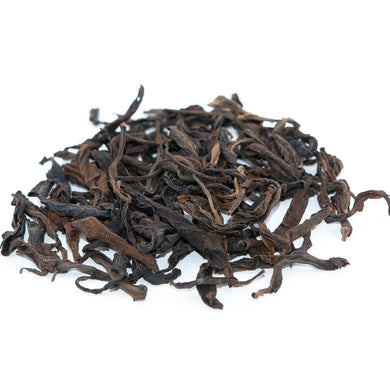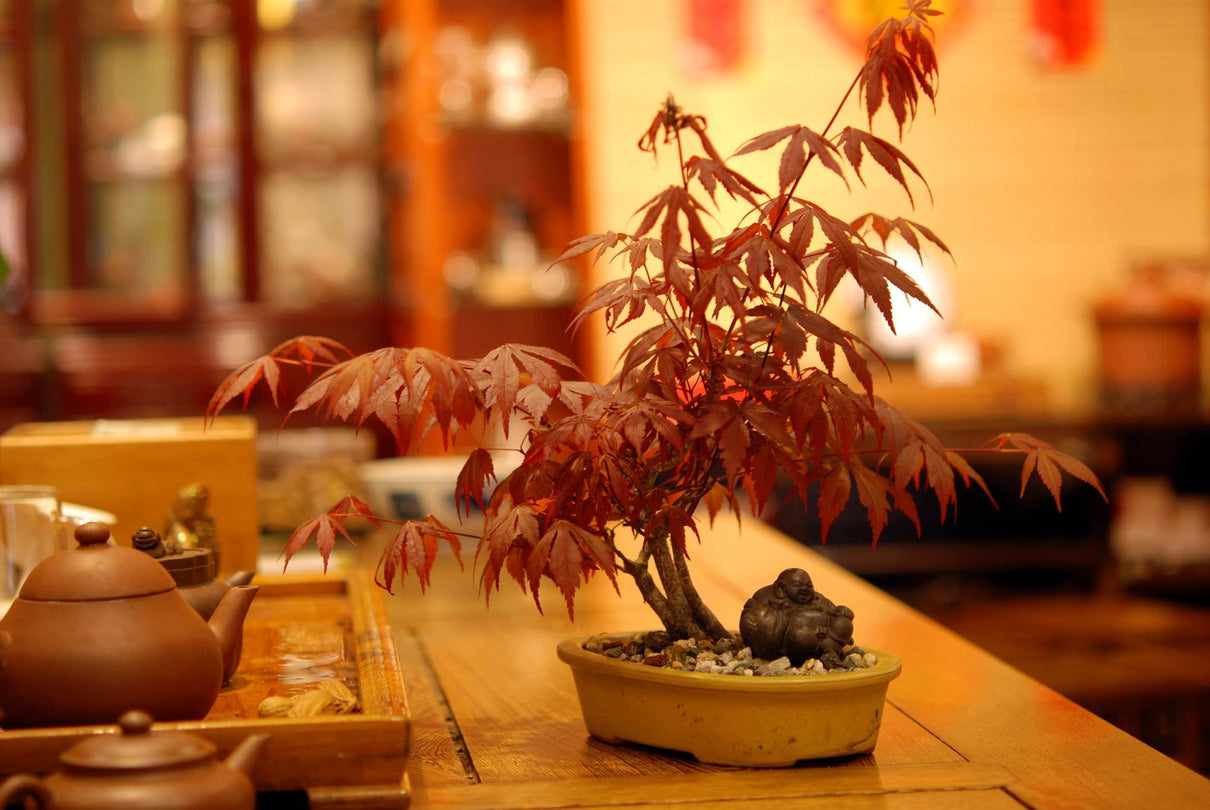1990's Ancient Camphor Wild Tree Loose Leaf Pu-Erh Tea (Raw/Sheng)
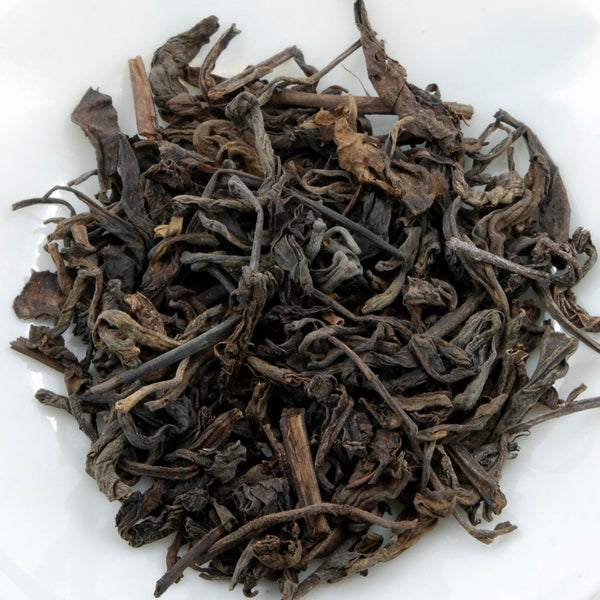
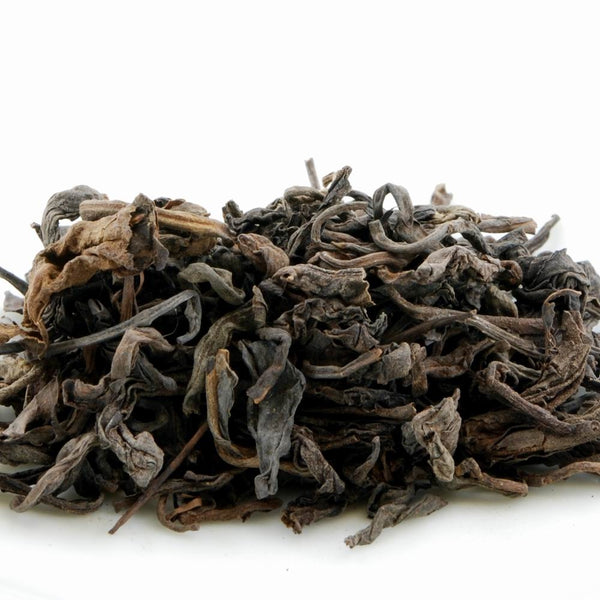
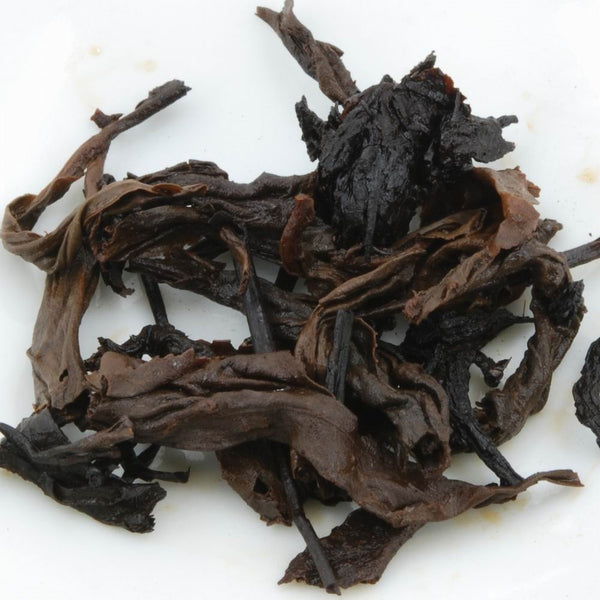
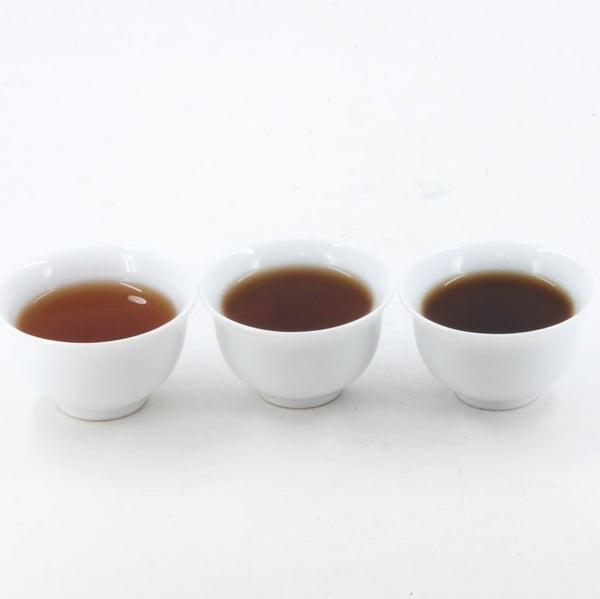
Origin: Yunnan, Xishuang Banna Region
Types: Sheng/Raw
Harvest Period: 1990s
The Quick Way - 5 Easy Steps
Step 1
Rinse a teapot, small teacups and a small pitcher with hot water.
Step 2
Put one tablespoon of tea leaves in the teapot for every two people being served. Use more for large leaf tea or for a stronger taste.
Step 3
Place the tea leaves inside the teapot and pour in enough hot water to cover the leaves. Pour out the water immediately to rinse the leaves. Use to this chart for proper water temperatures.
|
Green Tea Silver Needle White Teas and most tea made from “tips” |
75C – 80C |
|
Taiwan Oolong Tips Red/Black Teas |
90C – 95C |
|
Black Teas Pu-Erh (Bow-Lay) Te Guan Yin (Iron Buddha) Da Hong Pao (Cliff Tea) Lapsang Souchong Phoenix Oolong Aged White Teas |
95C – boiling |
IMPORTANT NOTES:
- Too much or too little heat for the tea you are making will break down the leaves too quickly or too slowly and the flavour will be inconsistent. Temperatures can be approximate.
- *Boiling means when the water has just reached a slow boil with big bubbles. The Chinese call this “Fish-Eye Water”. For green tea, watch for small streams of tiny bubbles starting to rise from the bottom of the kettle. This is called “Crab-Eye Water”.
- For Oolong teas, the correct temperature is somewhere between these two. If you do not have a thermometer, let the water stand for 2 minutes or so after reaching a first boil to get 90 – 95C C / 194 – 203 F.
Step 4
Empty the teacups and pitcher. Pour enough hot water into the teapot again to cover the leaves. Wait 8 - 10 seconds and pour the tea into the pitcher and serve, a little longer for a stronger taste. For additional brews, repeat Step 4, deducting two seconds for the second brew and adding two seconds for each additional brew.
Step 5
As the aromatic compounds in the tea leaves dissolve in the water, you will notice the subtle flavours of the tea begin to change with each brew. You will be amazed at the difference! To make tea taste even better, try making tea using Gong Fu Cha method, the traditional Chinese art of tea-making.
The Traditional Way Using The Gong Fu Cha Method
You will need:
- Teapot - preferably a small Chinese Yixing teapot. These have the best heat handling properties for tea-making, as well as for developing the flavour. If you only have a large teapot, use the quantities of water as if a small teapot and tea shown on the charts.
- Small teacups (similar in size to Japanese sake cups) or tiny bowls
- Kettle
- Pitcher - small glass or porcelain
- Fine Strainer - to keep your tea clear and free of sediment
- Tea Tray - A cookie sheet or large flat dish lined with a towel can make a good tray to prepare your tea on.
Step 1 - Warm The Teapot and Pitcher, Sterilize The Teacups and Strainer
The first step is to use the right size of teapot for the number of people you are serving. Most teas taste best when made using a Yixing unglazed clay teapot. Use this chart for the correct size of teapot for the number of people you are serving (use this amount of water if you are using a larger teapot). Pour some hot water into the teapot, pitcher, teacups and over the strainer to rinse, warm and sterilize them.
|
Size of Teapot |
Volume (ml / fl oz) |
Number of People Served |
|
#1 size |
70 / 2.4 |
1 - 2 |
|
#2 |
100 / 3.4 |
2 - 4 |
|
#3 |
175 / 6.0 |
3 - 5 |
|
# 4 |
225 / 7.6 |
4- 6 |
Referring to this chart, determine the correct water temperature for the type of tea you are making. Too much or too little heat will break down the leaves too quickly or too slowly and the flavour will be inconsistent. Temperatures can be approximate.
|
Green Tea Silver Needle White Teas and most tea made from “tips” |
75C – 80C
|
|
Taiwan Oolong Tips Red/Black Teas |
90C – 95C |
|
Black Teas Pu-Erh (Bow-Lay) Te Guan Yin ( Iron Buddha) Da Hong Pao (Cliff Tea) Lapsang Souchong Phoenix Oolong Aged White Teas
|
95C – boiling |
* Boiling means when the water has just reached a slow boil with big bubbles . The Chinese call this “Fish-Eye Water”. For green tea, watch for small streams of tiny bubbles starting to rise from the bottom of the kettle. This is called “Crab-Eye Water”.
For Oolong teas, the correct temperature is somewhere between these two. If you do not have a thermometer, let the water stand for 2 minutes or so after reaching a first boil to get 90 – 97C C / 194 – 206 F.
Step 2 – Rinse The Tea Laves
Empty the teapot and pitcher of the warming water. Place the measured amount of tea into the teapot using this chart and fill with the proper temperature water from the chart above. When pouring water in, allow the water to overflow the top of the teapot until the bubbles disappear and the water runs clear.
|
Size |
Size of Leaves |
|||
|
Rolled Leaves |
Less than 1 cm / 3/8 inches |
1 – 2 cm |
2 - 4 cm |
|
|
#1 size |
0.5 - 1 |
0.5 - 1 |
1 – 1.5 |
1.5– 2 |
|
#2 |
1.5 - 2 |
1.5 - 2 |
2 – 2.5 |
2.5 – 3 |
|
#3 |
3 – 3.5 |
3 – 3.5 |
3.5 – 4 |
4 – 4.5 |
|
# 4 |
4 – 4.5 |
4 – 4.5 |
4.5 – 5 |
5 – 5.5 |
This chart shows the amount of tea to use (in number of tablespoons) based on the size of the tea leaves you are using and the size of teapot. Adjust for personal taste.
Replace the lid and immediately pour off all the water (or a bit longer if using compressed tea) and shake out the last drops. Then tilt the lid slightly open on the teapot. This allows the heat in the teapot to escape and not “cook” the leaves so they can retain their aroma
Step 3 –The First Brew
Fill the teapot until the water flows over the top. Place the lid on the teapot and count the proper number of seconds using this chart. Adjust times to taste.
|
|
Rolled Leaves |
Less than 1 cm / 3/8 inches |
1 – 2 cm |
2 - 4 cm |
|
Rinse the leaves |
4 - 8 seconds |
pour off the tea as quickly as possible |
1- 3 seconds |
2 - 4 seconds |
|
First Brew |
10– 15 seconds |
1 – 2 seconds |
9– 12 seconds |
2 – 15 seconds |
|
Second Brew |
8– 13 seconds |
2– 4 seconds |
8– 10 seconds |
10– 13 seconds |
|
Third Brew |
6– 10 seconds |
4– 6 seconds |
6–8 seconds |
8– 10 seconds |
|
Fourth Brew |
4– 10 seconds |
4– 6 seconds |
6– 8 seconds |
8– 10 seconds |
|
Fifth Brew |
6– 12 seconds |
8– 8 seconds |
8– 10 seconds |
10– 12 seconds |
If you have a tea tray, slowly pour a little hot water over the teapot for a few seconds while counting. At the end of the count, pour the tea into the pitcher and tilt the lid open on the teapot. Empty the teacups of the warming water and serve the tea.
Step 4 – Additional Brews
For the second brew, repeat Step 3 until there is no more flavour from the leaves. High quality tea will make many good tasting brews. The taste of low quality tea will start to fade after only a few brews. Believe it or not, high quality tea is usually less expensive to use in the long run than low quality tea, it tastes better and lasts longer!
If the leaves still have some flavour remaining when you finish, you can keep them in the teapot with the lid closed for up to 12 hours. When you're ready to make more tea, just pick up the timing for the next brew where you left off, less a few seconds.
Congratulations!
Congratulations, you are now ready to move on to a more advanced level of tea-making. For full instructions about Gong Fu Cha, see Gong Fu Cha - The Complete Guide To Making Chinese Tea by Daniel Lui)
1990's (Specialty Aged Tea) (sheng)(puerh)(anniversary review)
I have been using this tea for over a year now. My consumptions levels have been relative with the use of other puerh and tisanes with family. I have never allowed myself to run out of this tea. For example, I have an unopened 200g bag that is on standby. There is about 60 grams in my tea drawer. I drink this tea when I know I don't want to be bothered by the astringency of regular puerh. This tea always produces comfort for me, aides in digestion. It is my experience that a first time user of this tea or guests may not be able to appreciate the complexity of this craft batch. It is my experience that a user of this tea most likely has a well developed palate and an appreciation for the nuances of puerh in general as well as an opened mind. People that drink tisanes regularly or those with limited exposure which haven't ventured into the holy grail of actual tea consumption and cultivation of the palate may not understand this rare dietary complex tea and it's flavor. If your a first time user you should start with young puerh first so you can develop an appreciation and then eventually graduate to this after a few months and live in this tea while your other puerh matures. Then you will be able compare your perceptions of flavor in retrospect and enhance your level of appreciation. To put it in a scientific way, it is about exposure and adaptation. If you don't have an affinity for the flavor then you may know it is still good for you on some level of nutrition. I'm not writing this because of a folly or some ill will. If you are overweight or have gastrointestinal problems this tea can help you. If you modify your diet you will be healthier, seek out a proper practitioner to help you modify your diet. This tea eliminated my previous long-term heartburn after meals. This tea can be used as a complete replacement for coffee. I suggest replacing coffee with puerh permanently and then having a craft coffee once a week instead, grind your own beans. If you do a cost benefit analysis buying coffees and the resulting products that come with the coffee is wasteful. Being a coffee purist is a different story but for those average coffee drinkers that don't care it would be much better for you to begin the gong fu methodology and switch permanently for health reasons alone. Yes we are talking about eliminating milk and sugar from your daily drink. I consider myself lucky to be on the pathway of tea drinking and tea culture. Thanks for bringing this tea to market. It has had a nice effect on my lifestyle and health. I look forward to visiting the shop one day. I've tried to imagine what it would be like visiting the shop in person. I can visualize non tea drinkers walking past the brightly lit shop windows. They are so close yet I am so far away. Cheers
1990's (Specialty Aged Tea) (sheng)(puerh)
I was careful to monitor my initial experience with this tea in my 65 ml server using 1.5 grams with no rinse. My extractions are always over a minute or two generally. During tea time with this particular tea existential crisis and past trauma seem to melt away in my world for just a moment while perceiving, while giving in to the tea itself. There is a transcendental approach to it I suppose and I would admit it here and its private and at the same time sacred. My usual puerh transports me to the forest floor if only in my mind for a moment whilst this particular tea takes me to a flowing stream's edge and now the forest floor is a faded memory and im left upon wet ancient sandstone. The tea came in a decent pouch and initially I broke the seal and tried to breathe in the effervescence of the tea as to give an indicator as to how it may taste. However, unlike a young puerh thats giving off a scent this 1990s aged blend wasn't giving up any indication as to what it would taste like in the cup. Once it was wet then yes the secret to what it was going to taste like started to manifest in the air around the vessel. I have started drinking this tea regularly now with multiple extractions in larger vessels. It is an understatement to say it does not fail to impress. I also think this is a subjective matter open to interpetation. Mouthfeel is subtle, decent aroma and taste. The wet leaves in the vessel carry a mild mossy aroma easy to hold for a while and discover. I usually do not add components to my tea but I oversteeped a 180ml vessel after its forth extraction on a hotplate for maybe 1 hour on low heat. I poured that into a teacup then added half/half coffee creamer to change the color then a dose of honey and some lemon. It tasted great and seemed to have a lot of potential. Thanks for bringing this tea to market I really appreciate that and the excellent shipping as well. Cheers.
Awesome, Wonderful
Delicious teas, high quality, thoughtful support from Daniel. I will be buying teas from him for a long time to come. This tea in particular seems quick to make it to the blood stream. Simultaneously easing and energizing, helps me to focus my mind and access my intuition. Earthy and somewhat astringent but still balanced.
Legendary !!!!
This was the first old sheng I bought from Daniel . Its color in the cup is a beautiful black cherry � red ... The smell of the wet leaves reminds me of wet soil , of entering a old attic and kinda like a old cigar box ! I feel this tea has aged very well , clean , smooth , sweet and not at all bitter (like young sheng) .. I get notes of vanilla , old forrest logs , tobacco , cola , damp grass , hay and I can't place it but something near the ocean beach ... anyways this tea is a bargain and if your looking for the aged sheng taste at a affordable price this is the one because its Legendary !

Delicious Pu'Erh
Drinking this tea gives me a sense of peace and ancient magic. It also puts me in a nice state of mind. It is delicious, and you can re-steep many times. A tea to give thanks to.



